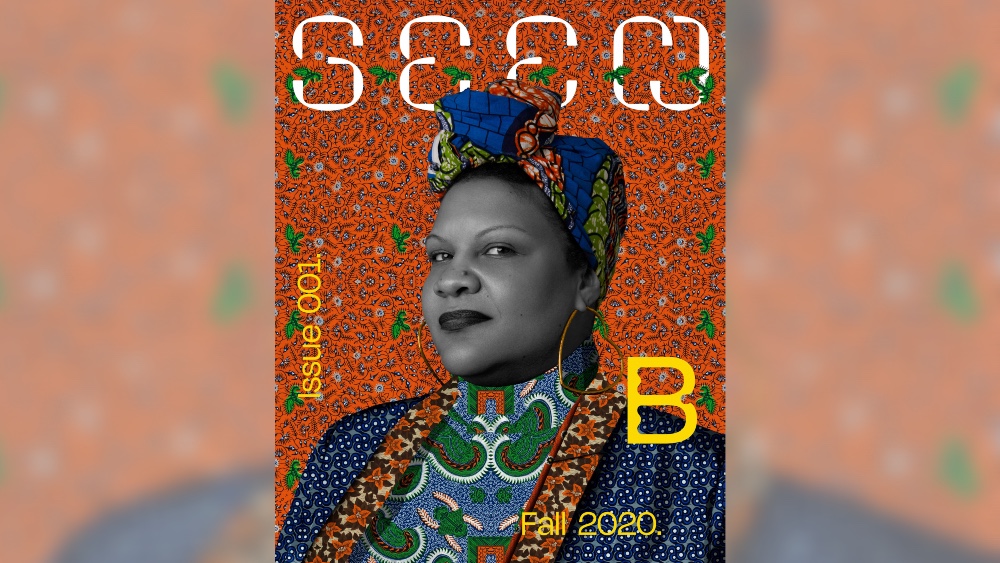If you’re interested in sharing your opinion on any cultural, political or personal topic, create an account here and check out our how-to post to learn more.
____
15 years ago, I directed my first feature film, a documentary called Scene Not Heard: Women in Philadelphia Hip Hop. The film’s title was a play on the Southern adage for children to be "seen and not heard" in public spaces, one to which I felt women and gender non-conforming folks on the hip hop scene were also unofficially (and sometimes officially) conscripted, despite their essential contributions. Fresh out of graduate school, the journey of that film and the folks and institutions I encountered during its festival run directly led to my founding BlackStar Projects, and the BlackStar Film Festival. And now my work on BlackStar has led to this new publication, Seen, a journal of film and visual culture made for and about Black, Brown, and Indigenous artists of color.
Being seen feels especially challenging right now, as we are collectively relegated to be inside of our homes, watching one of the fifty-lleven new streaming platforms or stuck in a social media wormhole. We felt that acutely during this summer’s BlackStar Film Festival, which was moved online due to the pandemic, depriving so many of us of the in-person social interactions which typically provide creative fuel to last a season or a year. As artists of color, we have always had to contend with our work being overlooked and ignored. We are practiced in finding each other, making demands of institutions, and building worlds anew. With Seen we are attempting to highlight why our perspectives on our art have always been and continue to be vital.
We chose the name Seen because of its multiplicity of meanings – there are so many ways to see and be seen and to be understood. We asked our contributors to answer the question: "What does it mean to be seen?" Some of their answers are printed in the issue, but for me the question hinges on the difference between being seen and being watched. The former feels like community, solidarity and acknowledgement, while the latter conjures consumption, isolation, and potential danger. Extractive versus generative. There is of, course, nuance to all of this, which is partly what the contributors in this issue are exploring.
In the first issue, we hope you find some kind of mirror in the 25 essays, reviews, and interviews, including Heitor Augusto’s essay on queer Brazilian cinema of the moment and letting go of the belief that we’re in control of organizing a film’s flux; Heidi Saman’s poignant conversation with Lulu Wang on how to stay committed to the purity of one’s story; or Darol Kae’s exploration of Sky Hopinka’s formalist interventions in maɬni — towards the ocean, towards the shore, rendering contemporary Indigenous life. For our first Studio Visit feature we take a peek into renowned painter Amy Sherald’s Jersey City studio. Terence Nance shares an unproduced short script with us and Blitz Bazawule shares some of his storyboards from The Burial of Kojo. I was overjoyed that one of my favorite writers, Niela Orr, was available to interview Radha Blank — who also graces our cover, illustrated by Makeba Rainey — about her new film The Forty-Year-Old Version. In Orr’s words the film is “an exciting auteurist work.” There’s so much goodness in this issue — it’s bursting at the seams.
This issue was assembled as we planned and produced our 9th annual film festival, but also while collectively navigating the effects of the novel coronavirus, and amidst the Black-led uprisings sparked by persistent injustice regarding police brutality in the United States. That is the political context of this issue and certainly one in which it can be read, but of course these issues are not new ones. The films and exhibitions discussed here were produced before the recent demonstrations began, and yet they somehow feel prescient. Our communities have long been radically imagining other, freer worlds — advocating for our own joy, true communities of care and abolition — and we will continue to be on this wavelength.
Thank you for seeing us.
____
Maori Karmael Holmes is the Artistic Director and CEO of BlackStar Projects. The above is an adaptation of the Letter from the Editor which appears in Seen Issue 001, now available on BlackStar's website here.
